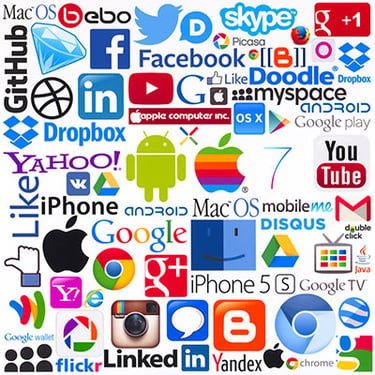 The introduction in the United States of gigabit Fiber to the Home (FTTH) connectivity made me wonder what this extra speed could be used for. After all, many people survive perfectly happily with 30 Mbps (or smaller) connections and I recently downgraded my own home service from 120 Mbps to 60 Mbps without really seeing any difference in performance.
The introduction in the United States of gigabit Fiber to the Home (FTTH) connectivity made me wonder what this extra speed could be used for. After all, many people survive perfectly happily with 30 Mbps (or smaller) connections and I recently downgraded my own home service from 120 Mbps to 60 Mbps without really seeing any difference in performance.
So how would I use the 17x increase in capacity that is available from a 1 gigabit connection? Is it just an expensive white elephant that no-one will actually need? The short answer is that it will be required – connection speeds that are adequate now will quickly become a bottleneck if they cannot cope with future needs.
Consequently I’ve got my crystal ball out and come up with five applications that I think will drive the need for this fiber connection speed – do add your own in the comments section.
1. Entertainment
Video and music streaming services, such as Netflix and BBC iPlayer, already make up a large proportion of network traffic for the typical user. With the growth of Ultra HD (or 4k) TV sets, this percentage is only going to increase, particularly as a larger proportion of the content we consumer will be streamed, rather than delivered through aerials, satellite or physical media such as DVDs.
At the same time traditional telecoms operators are investing in compelling content to win and retain customers – witness the large sums spent by BT in the UK for sports rights such as Premiership and Champions League football. Add into this the bandwidth requirements of immersive, multi-player gaming and you can see how entertainment can take a large percentage of your gigabit capacity – particularly in a household with lots of people accessing services at the same time.
 2. Telehealth
2. Telehealth
The combination of an aging population and an increasing interest amongst consumers in checking their health using technology will rapidly grow the telehealth market. Through wearable sensors and HD cameras, the elderly and vulnerable will be able to be monitored 24x7 in their own homes, rather than admitted to hospital or care homes. This not only adds to independence but reduces healthcare costs. Apple’s recent announcement of healthcare monitoring within the iPhone 6, as well as the growth of standalone monitoring devices shows how fast this market is expanding. All of these sensors will need to be able to upload data in real-time, and allow two way communication between patients and medical staff, adding considerably to bandwidth needs.
3 High definition telepresence
Consumers have already embraced internet-based voice and video calling through services such as Skype. This trend will continue, with increasing demands for higher definition video solutions that have a greater quality of service. With a greater proportion of the population working from home or accessing education remotely, higher quality services require greater capacity. According to Cisco, high-definition telepresence requires a speed of at least 24 Mbps and a 50 millisecond latency to recreate the feeling of sitting in a room speaking to people.
 4. The Internet of Things
4. The Internet of Things
Analyst Gartner has predicted that the average family home will contain more than 500 smart, internet-connected devices by 2022. This move to the Internet of Things will mean that previously dumb equipment (from TVs to electric meters and thermostats) can communicate in real-time with the world around it. While each device itself will only use a small amount of bandwidth, the cumulative effect will add to demands on capacity, particularly when combined with smartphones, tablets and PCs.
5. Living in the Cloud
More and more digital media, from our photos to music and video, is stored in the Cloud, rather than on local PCs or hard drives. As files get larger, this makes it easier to access it wherever it is required, from whatever device, as well as to share on social media and with family and friends. At the same time existing web use will increase exponentially as more of our everyday lives, from shopping to banking will take place online. All of this requires higher bandwidth, not just to download files, but also to upload to the Cloud, adding to capacity needs.
These are just five areas I can see driving the need for higher bandwidth – but gigabit provides a platform for new, innovative applications that haven’t yet been invented. What do you think will fill up tomorrow’s gigabit connections?



Comments